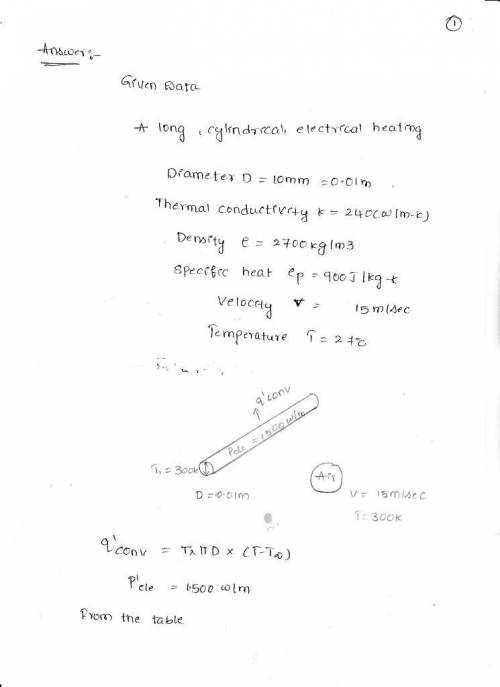
Engineering, 31.03.2020 04:19 brookesquibbs
A long, cylindrical, electrical heating element of diameter 10 mm, thermal conductivity 240 W/m·K, density 2700 kg/m3, and specific heat 900 J/kg·K is installed in a duct for which air moves in cross flow over the heater at a temperature and velocity of 27°C and 15 m/s, respectively. (a) Neglecting radiation, estimate the steady-state surface temperature when, per unit length of the heater, electrical energy is being dissipated at a rate of 2000 W/m. (b) If the heater is activated from an initial temperature of 27°C, estimate the time required for the surface temperature to come within 10°C of its steady-state value. Evaluate the properties of air at 450 K.

Answers: 2


Other questions on the subject: Engineering

Engineering, 04.07.2019 18:10, anna22684
Water at 70°f and streams enter the mixing chamber at the same mass flow rate, determine the temperature and the quality of the exiting stream. 0 psia is heated in a chamber by mixing it with saturated water vapor at 20 psia. if both streams enters the mixing chamber at the same mass flow rate, determine the temperature and the quality of the existing system.
Answers: 2

Engineering, 04.07.2019 18:10, genyjoannerubiera
Assuming compressible flow of air and that the measurements are done at flagstaff a pitot static tube that gives the difference of total and static pressure measures 0.35 m of mercury. what is the velocity of air? assume the temperature to be 300k. (submit your excel or matlab calculation sheet)
Answers: 1

Engineering, 04.07.2019 18:10, samanthabutryn
Which one from below is not one of the reasons of planning failures? (clo3) a)-planner is careless. b-planner spend less time in the field but more time on the desk c)-planner is not qualified d)-planner does not have sufficient time to properly plan
Answers: 3

Engineering, 04.07.2019 18:20, ashleyjaslin
Derive the correction factor formula for conical nozzle i=-(1+ cosa) and calculate the nozzle angle correction factor for a nozzle whose divergence hal-fangle is 13 (hint: assume that all the mass flow originates at the apex of the cone.
Answers: 3
You know the right answer?
A long, cylindrical, electrical heating element of diameter 10 mm, thermal conductivity 240 W/m·K, d...
Questions in other subjects:


Mathematics, 20.04.2021 19:50




Chemistry, 20.04.2021 19:50


Mathematics, 20.04.2021 19:50


History, 20.04.2021 19:50






